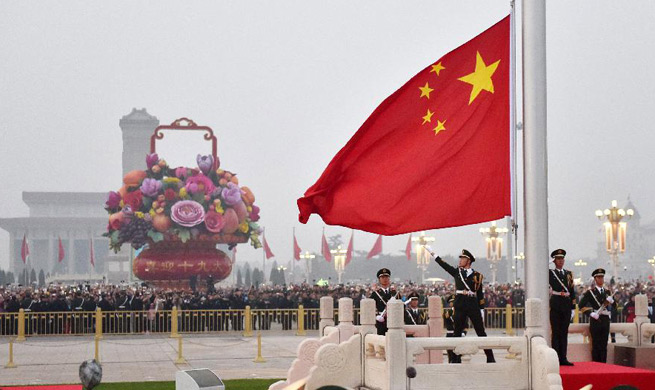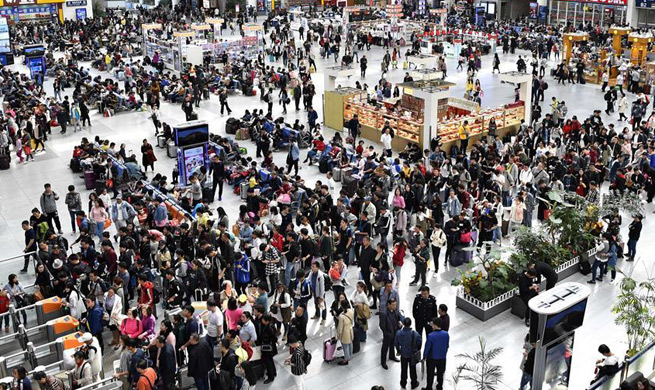BEIJING, Oct. 1 (Xinhua) -- The world's largest developing and developed countries are preparing for U.S. President Donald Trump's state visit to China in November.
The visit is a major opportunity for the two countries to advance relations, which have been generally stable, and show to the world that they can focus on cooperation while handling differences.
The visit comes as one country is at a crucial stage toward building a moderately prosperous society by 2020, and the other is determined to be "great again."
There are a thousand reasons to make the China-U.S. relationship work, and no reason to break it.
To name just a few:
Top-level interaction: Leaders of the two countries are in frequent communication and have had in-depth exchanges on fundamental issues. Their face-to-face meetings, along with phone calls and letters, ensure that both sides understand each other's strategic intentions and can avoid making mistakes.
New mechanisms: Although there remain differences and sensitive issues, including bilateral trade and the situation on the Korean Peninsula, these can be solved through dialogue and consultation, on the basis of respecting each other's core interests and major concerns.
The two countries have agreed to establish high-level mechanisms for dialogue and cooperation in diplomacy and security, the economy, law enforcement and cyber security, and people-to-people exchanges. These mechanisms follow the principles of non-conflict, non-confrontation, mutual respect and win-win cooperation.
Wide Pacific: Economic interdependence alone does not guarantee peace, but it is a strong force to prevent conflict. The Pacific provides enough room for both sides to develop. China and the United States are each other's largest trading partners. Two-way trade was 520 billion U.S. dollars last year. The figure was 2.5 billion dollars in 1979. The two are working together in areas such as energy and infrastructure.
Global governance: If China and the United States cooperate, they can become the bedrock of global stability and world peace. There are many arenas where both sides need to, and can, cooperate, ranging from counter-terrorism to peace-keeping.
Public foundation: People-to-people exchanges are already common where the two have the least disagreements and the most consensus. There is great potential for future cooperation in such areas as culture, education, health and innovation. A new agreement will allow China to send 100,000 government-sponsored students to the United States and permit 100,000 U.S. students to study in China in the next four years.
All in all, China believes the common interests of the two far exceed the differences, and cooperation is the only logical alternative.
There is no such thing as the so-called Thucydides trap, an expression explaining the likelihood of conflict between a rising power and the currently dominant -- as Athens and Sparta did in the 5th century B.C.
As both China and the United States hold that healthy and stable relations are beneficial to a world in need of peace and prosperity, it is time to match these words with concrete action.
The two countries are beginning a new chapter, which will take political resolve and wisdom. As long as the two understand the direction of the bilateral relationship, they can make history.
The right time to do so is now.

















